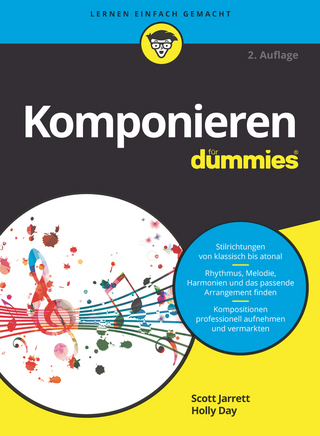
Japan's Musical Tradition
Hogaku from Prehistory to the Present
Seiten
2020
McFarland & Co Inc (Verlag)
978-1-4766-7559-6 (ISBN)
McFarland & Co Inc (Verlag)
978-1-4766-7559-6 (ISBN)
- Titel z.Zt. nicht lieferbar
- Versandkostenfrei innerhalb Deutschlands
- Auch auf Rechnung
- Verfügbarkeit in der Filiale vor Ort prüfen
- Artikel merken
Reveals shortcomings in the usual interpretation of Japanese music from a pitch-based Western perspective and carefully explores how the quintessential musical elements of singing, instrumental accompaniment, scale, and format were transmitted from their Shinto inception through all of Japan's music.
What makes Japanese music sound Japanese? Each genre of Japan's pre-Western music (hogaku) morphed from the preceding one with singing at its foundation. In ancient Shinto prayers, words of power recited in a prescribed cadence communicated veneration and community needs to the divine spirit (kami). From the prayers, Japan's word-based music gained support with simple percussion and stringed instruments. More sophisticated recitations evolved with biwa, shamisen, and koto accompaniment.
This study reveals shortcomings in the usual interpretation of Japanese music from a pitch-based Western perspective and carefully explores how the quintessential musical elements of singing, instrumental accompaniment, scale, and format were transmitted from their Shinto inception through all of Japan's music. Japan's culture, including the iemoto system and teaching methods, served to exactly replicate Japan's music for centuries. Considering Japan's music in the context of its own culture, logic, and sources is essential to gaining a clear understanding of Japan's music and dissipating the mystery of the music's "Japaneseness." Greater appreciation for the music inevitably follows.
What makes Japanese music sound Japanese? Each genre of Japan's pre-Western music (hogaku) morphed from the preceding one with singing at its foundation. In ancient Shinto prayers, words of power recited in a prescribed cadence communicated veneration and community needs to the divine spirit (kami). From the prayers, Japan's word-based music gained support with simple percussion and stringed instruments. More sophisticated recitations evolved with biwa, shamisen, and koto accompaniment.
This study reveals shortcomings in the usual interpretation of Japanese music from a pitch-based Western perspective and carefully explores how the quintessential musical elements of singing, instrumental accompaniment, scale, and format were transmitted from their Shinto inception through all of Japan's music. Japan's culture, including the iemoto system and teaching methods, served to exactly replicate Japan's music for centuries. Considering Japan's music in the context of its own culture, logic, and sources is essential to gaining a clear understanding of Japan's music and dissipating the mystery of the music's "Japaneseness." Greater appreciation for the music inevitably follows.
Miyuki Yoshikami taught Honors courses on the Japanese performing arts at the University of Maryland. She performs professionally on the koto at the Kennedy Center, Freer Gallery, the National Cathedral, and with the National Symphony Orchestra. She lives in Bethesda, Maryland.
Table of Contents
Acknowledgments
Preface
Introduction
1. Aesthetic Heritage
2. Ancient Music and Its Properties
3. Simple Instruments
4. Two Modes and Tuning of the Instruments
5. Singing the Uta (Song/Poetry)
6. The Format of Continuity in Hogaku Compositions
7. Decorating the Melodic Line
8. Why We Are Able to Hear Ancient Music Today: The Iemoto System
9. The West, Hogaku Today and the Future
Epilogue
Glossary
Chapter Notes
Bibliography
Index
| Erscheinungsdatum | 31.10.2019 |
|---|---|
| Zusatzinfo | 100 photos |
| Verlagsort | Jefferson, NC |
| Sprache | englisch |
| Maße | 152 x 229 mm |
| Themenwelt | Kunst / Musik / Theater ► Musik |
| Geisteswissenschaften ► Geschichte | |
| Sozialwissenschaften ► Ethnologie | |
| Sozialwissenschaften ► Soziologie | |
| ISBN-10 | 1-4766-7559-7 / 1476675597 |
| ISBN-13 | 978-1-4766-7559-6 / 9781476675596 |
| Zustand | Neuware |
| Haben Sie eine Frage zum Produkt? |
Mehr entdecken
aus dem Bereich
aus dem Bereich


